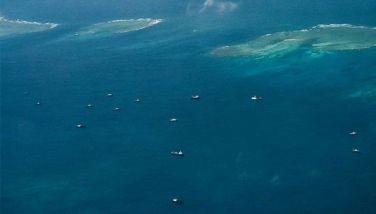First Easter Mass in RP: Limasawa or Masawa?
April 5, 2007 | 12:00am
 BUTUAN CITY – Local historians who have been contending since 1976 that the country’s first Easter Mass was held here more than 400 years ago, expressed confidence that this time, the National Historical Institute (NHI) would finally validate their claim.
BUTUAN CITY – Local historians who have been contending since 1976 that the country’s first Easter Mass was held here more than 400 years ago, expressed confidence that this time, the National Historical Institute (NHI) would finally validate their claim.
"We are confident that this time, new scientific evidence gathered will prove that indeed, the first Christian Mass in the country was really held here in Butuan City, particularly in Masawa, and not on Limasawa Island, days after Magellan’s fleet of three ships and 186 crew discovered the Philippines on March 16, 1521," Fr. Joesillo Amalia, a Butuan diocese museum curator, told The STAR.
Last March 31, the city marked the 486th anniversary of the First Easter Mass in the Philippines in an austere and simple celebration held at the site of the cross, which Magellan and his men were believed to have planted right after the First Easter Mass was held.
The NHI built a historical marker on the Island of Limasawa in Southern Leyte after a law was passed in the fifth Congress making it the site of the first Mass in the Philippines, held on March 31, 1521.
But historians here headed by Vicente de Jesus, Fr. Joesillo Amalia, Greg Hontiveros and several others with the support of Butuan City Rep. Leovigildo Banaag, said they have scientific data and official historical accounts to back their assertion, and asked the NHI to resolve the issue.
At a meeting held at the Butuan City library yesterday, local historians agreed to present before the NHI fresh new evidence using scientific and DNA findings.
They enumerated "three approaches" to their presentation: the use of multi-disciplinary approach to history using scientific and geomorphological study of the Butuan Delta that will prove the existence of Masaua Island as the Mass site; second, their approach to the presentation would be seen as a continuum of historical events prior to and after the first Mass rather than viewing it as a controversy to be settled in isolation; and third, using spatial analysis, which investigates geographic areas and sea conditions of southeastern Visayas and Northeastern Mindanao to decipher the distance and latitude details of the Magellan expedition on that particular leg of their journey.
In 1995, the NHI created the Gancayco Commission to resolve the issue.
The first presentation by Butuan historians was made in 1976. But then First Lady Imelda Marcos, a native of Leyte, came before the attendees and candidly told them there were better things to do than debate on things of the past.
"She (Imelda) ended the whole exercise, a portent of the nation that never loved its past, wasted its present and dimmed its future," read the prologue prepared by Butuan historians for its third attempt to present before the NHI its claim to being the site of the first Easter Mass celebrated on Philippine soil.
BrandSpace Articles
<
>
- Latest
Latest
Latest
December 28, 2024 - 4:15pm
By Rupert Paul Manhit | December 28, 2024 - 4:15pm
December 21, 2024 - 4:34pm
By Renato Cruz De Castro | December 21, 2024 - 4:34pm
December 14, 2024 - 11:22am
By Karry Sison | December 14, 2024 - 11:22am
December 9, 2024 - 2:53pm
By Rupert Paul Manhit | December 9, 2024 - 2:53pm
December 8, 2024 - 9:00am
By Jing Castañeda | December 8, 2024 - 9:00am
November 30, 2024 - 5:19pm
By Joanna Perfecto | November 30, 2024 - 5:19pm
Recommended


























